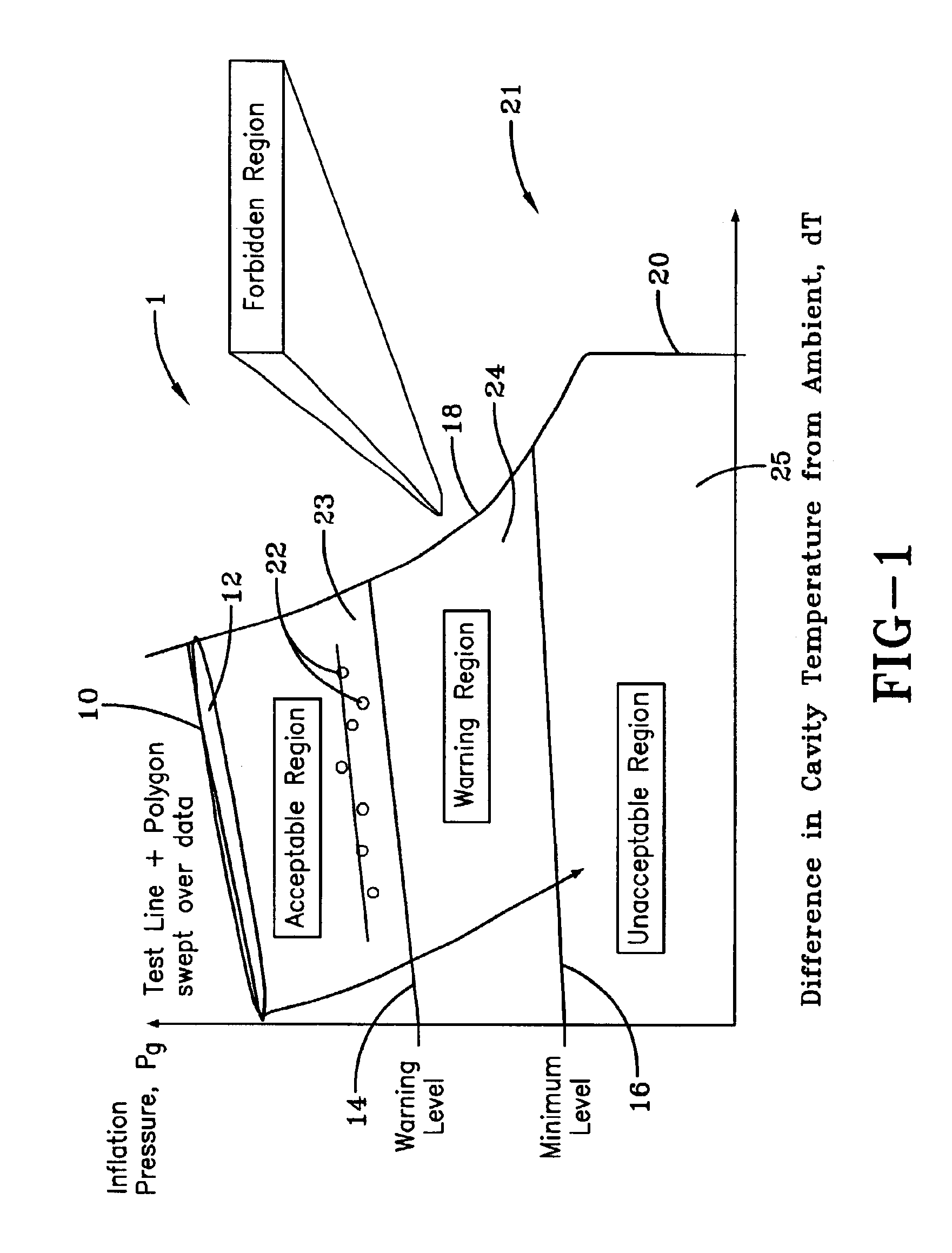Method for processing information in a tire pressure monitoring system
a technology of tire pressure monitoring and information processing, which is applied in the direction of digital computer details, instruments, roads, etc., can solve the problems of tire pressure not being monitored and maintained frequently enough by many driving publics, potentially hazardous situations for operators, and loss of pressure, so as to facilitate the utilization of measurements and accurately detect low inflation
- Summary
- Abstract
- Description
- Claims
- Application Information
AI Technical Summary
Benefits of technology
Problems solved by technology
Method used
Image
Examples
Embodiment Construction
The subject invention is described in a preferred embodiment and alternative embodiments herein and is directed toward providing a method for processing information in a tire pressure warning system. The method is hardware independent and may be utilized in interpreting data from a wide range of tire pressure monitoring systems that employ differing means for measuring tire pressure and temperature. The present method requires a relatively low level of data and therefore requires less processing and storage memory, whereby lowering hardware costs. Moreover, the method may be incorporated into a basic embodiment for warning a driver of tire pressure failure or enhanced into an advanced method that provides different alarms at different levels to warn the driver of an early indication of pressure leakage. Such an early warning allows the driver to remedially address the tire condition in a convenient manner and time. The method embodying the invention can further function to warn of l...
PUM
| Property | Measurement | Unit |
|---|---|---|
| pressure | aaaaa | aaaaa |
| pressure drop | aaaaa | aaaaa |
| pressure warning threshold | aaaaa | aaaaa |
Abstract
Description
Claims
Application Information
 Login to View More
Login to View More - R&D
- Intellectual Property
- Life Sciences
- Materials
- Tech Scout
- Unparalleled Data Quality
- Higher Quality Content
- 60% Fewer Hallucinations
Browse by: Latest US Patents, China's latest patents, Technical Efficacy Thesaurus, Application Domain, Technology Topic, Popular Technical Reports.
© 2025 PatSnap. All rights reserved.Legal|Privacy policy|Modern Slavery Act Transparency Statement|Sitemap|About US| Contact US: help@patsnap.com



